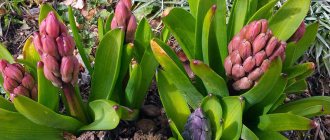A plant such as mallow (Malva) is also called kalachik, mallow, and also rose holly. It is directly related to the mallow family. Most often, this herbaceous plant is an annual, but it can also be a biennial or perennial. This genus today includes about 30 different species found in the wild. They prefer to grow in temperate climates and in the wild, mallows can be found in North America, Europe, North Africa and Asia. The cultivation of mallow began in Ancient Greece and Ancient Egypt. Thus, in the works of Pinius the Elder and Hippocrates, a description of the medicinal properties of this flower was found. In the 20s of the twentieth century, experts found ecological plasticity in this plant, as well as high feeding qualities. Artists enjoyed painting their large, rich pink flowers, and poets admired them in their poems.
Description of the plant
Musk mallow (Malva) is a herbaceous, perennial plant. It grows to a height of no more than 1 m. The culture received its name due to the musky smell of the flowers.
What does musk mallow look like?
The stems of the bush are densely branched. The entire surface of the mallow is covered with small hairs, including the underside of the leaf. The latter have an oval shape and are attached to the stem on elongated petioles. Along the peduncle the buds are single, and the crown is crowned with an inflorescence of three flowers.
Pearl pink or dazzling white petals in a three-lobed calyx. Because of its snow-white outfit, it is sometimes called the white bride mallow. The open bud reaches 5 cm in diameter.
The fruits of the culture are also interesting. They look like a wheel of 15-20 seeds around the middle cone.
For your information! The grass is a good honey plant and has medicinal properties. For problems with the gastrointestinal tract, a decoction of the roots of the plant has long been used. An infusion of leaves helps with non-healing wounds.
Popular varieties
Today there are many varieties of stock roses, and even individual varieties have their own subspecies. But traditionally there are the most popular ones - both among gardeners and designers.
Sudanese
Such stock roses are giants in the world of garden crops, they reach 3 meters
A very ancient plant. It is curious that this variety is used not only for decorative purposes. Delicious honey drinks are prepared from the fruits of Sudanese mallow. Decoctions are used in folk medicine as an expectorant and anti-inflammatory agent.
Refers to biennial varieties.
Wrinkled
This species is often compared to peonies, the flowers are really very similar
Initially, these flowers began to be called stock roses. Breeders love them very much. Dwarf varieties have been bred, the height of which does not exceed 75 cm. But there are also medium-sized and tall ones, reaching up to 2 m.
musky
This crop is not tall; it does not grow higher than 1 m.
The flowers of this variety are very delicate, white or pinkish. Several subspecies are known, among which the White Tower and Pink Tower, as well as White Perfection, are especially popular.
Purple annual
This flower loves sunny places where it blooms lushly and for a long time.
A direct descendant of a forest variety, therefore very unpretentious. considered a relatively tall plant, stems exceed 1 m.
Growing mallow from seeds
Perennial mallow - planting and care
When growing a plant from seeds, there is always a danger of getting a specimen that is not similar to the parent bush. Often the characteristics of wild ancestors take over. But many gardeners like this method of getting new bushes.
Sowing
Seeds are sown in 3-4 pieces. in one hole. The depth of the planting hole should not be more than 1 cm. The distance between the holes is maintained at 30-45 cm.
Musk Mallow Seeds
The best time for sowing mallow is May. The seeds hatch in 18-24 days.
When sowing in autumn, the depth of the holes is 3-4 cm. It is necessary to protect the crops from frost.
Seedling care
Mallow seedlings begin to germinate at the end of winter. Step-by-step description of the procedure:
- Prepare containers with the nutrient mixture.
- Place seeds in shallow holes and sprinkle with soil.
- Moisten the soil.
- Cover with film.
- Provide a temperature range from 18 °C to 20 °C.
- Monitor soil moisture.
On the 8-10th day of planting, hardening should begin. After three true leaves appear, they can (but are not advisable) be picked.
Important! Before planting in open ground, seedlings must be hardened off. To do this, they can be taken out onto a loggia, terrace or balcony.
Wrinkled
In nature, the crop grows up to 2 meters, in gardens up to 1 meter. There is no foliage in the upper part. Funnel-shaped flowers are simple, semi-double and double. When flowering, a relative of the wild rose mallow produces large corrugated yellow flowers with a diameter of 6 to 8 cm, which are collected in inflorescences.
Under favorable conditions, flowering continues until September. An undemanding crop adapts to any soil, but does not tolerate dry areas. The plant develops better in places where groundwater is found close to the ground. With a lack of moisture, the flowering period is shortened and without additional regular watering the bush dries out.
To extend the flowering period, faded inflorescences are cut to 20 cm above ground level.
Mallow Wrinkled
Planting mallow in open ground
Mallow is planted in open ground in the form of rooted cuttings.
How mallow propagates - planting methods
The soil for planting should be rich in organic matter and loose. To avoid stagnation of water, a well-drained area is allocated for planting.
Up to half a meter of distance is left between future bushes. Seedlings are planted one at a time.
When to plant
Rooted cuttings can be planted in open ground until mid-summer. Before winter, the young plant will have time to adapt and take root well.
Seeds can be sown in early spring and before winter. Autumn sowing requires shelter for the winter. Dry leaves, spruce branches, straw, etc. will do.
How and where to plant
It is very important to plant a plant with a strong root system. It is best with an untouched clod of earth. In this regard, it is difficult to replant mature plants. Its tap root is quite long.
Important! Even when sowing, it is better to sow seeds in individual containers. When picking, many seedlings die.
For abundant flowering and optimal decorativeness, it is advisable to plant mallow in a place protected from the winds.
Melyuka
Mallow mallow is of particular interest for livestock farming, since its protein content is not inferior to alfalfa and clover. The highly branched root system is capable of penetrating the soil to a depth of 2 meters.
The plant grows up to 3.5 meters in height. The plant has a high degree of reproduction and up to 30,000 seeds are formed on one bush. The variety is cold-resistant, seeds can germinate at +5-7°C. Seedlings tolerate frosts of -7°C, and adult plants do not die even at -10°C.
Today, gardeners are interested in mallow mallow for use as green manure to improve the soil. Within a month and a half, the plant produces a large volume of leaf mass, which is mowed before flowering and embedded in the soil. During the season they receive two mowings of mallow.
Meluka is an excellent honey plant. Small buds are formed in the axils of the leaves and, when blooming, spread a delicate aroma that attracts bees.
Malva Meluka
Caring for mallow in the garden
Perennial carnation - planting in the garden and care
Perennial nutmeg mallow purifies the air in the environment. At the same time, it requires a person to enrich the soil.
Therefore, the flower needs to be looked after, that is, fertilized, watered and weeded. Ideally, it is enough to feed the bushes once every three weeks. The main thing is that the complex contains:
- potassium;
- nitrogen;
- phosphorus.
In spring, it won’t hurt to scatter humus over the flowerbed.
Systematic removal of wilted buds and leaves will increase the decorative value of the bush and will prevent diseases and pests.
Before frost, the mallow is cut off at the root. To avoid freezing of the roots, the area with the hollyhocks can be thickly mulched (straw, sawdust, leaves, compost).
How to water a plant
The frequency of watering depends on weather conditions. In hot weather, it is recommended to water 2-3 times a week. In normal weather, weekly irrigation is sufficient.
The water should be settled and warm. Watering is done at the root of the plant.
For good aeration of the root system, watering should be combined with loosening and weeding (at least every other time).
Tree-like
This variety is popularly known as garden hibiscus. The powerful bush grows up to three meters in height and looks like a small tree, during the flowering period it is covered with large double flowers of white and pink color. Under favorable conditions, the tree can grow up to 5 meters, which is why beginners do not immediately understand that it is a flower.
Breeders are constantly working to develop new varieties with different shades of flowers. Today, hybrids with azure, red and peach flower colors are known. In the first year after planting in the garden, it does not bloom, but spends all its energy on the development and formation of root rosettes.
The photo below shows Mallow Tree:
Tree mallow
Reproduction
Mallow propagates well from cuttings. To germinate, the branches should be planted in the ground.
Mallow cuttings
Planting material is cut from the middle of a healthy stem. Late spring and summer are suitable for this.
Important! The sections should be sprinkled with crushed coal or cinnamon powder. This will disinfect the wounds and stop the secretion of juice.
For seedlings, you can use ready-made soil or prepare it yourself. A mixture of turf soil and peat (humus) is best suited.
With regular watering, the cuttings will soon take root. This can be understood from the external manifestations of the seedling: it does not wither, but begins to grow.
The bride mallow is planted in a permanent place with a lump of earth.
Healing properties
For a long time, mallow has been famous for its beneficial properties. For example, an infusion of the flowers of this plant can help with intestinal and stomach disorders.
A decoction based on mallow flowers helps to cope with skin diseases, relieves itching, and is used to heal cuts and other wounds. Mallow inflorescences contain useful elements such as sugar, carotene and vitamin C.
The plant is widely used in cosmetology. Its healing properties can restore the epidermis.
Diseases and pests
Mallow is protected from infection by fungal diseases by the phytoncides it produces. But with improper care or unfavorable weather conditions, the protection weakens.
A weakened plant is attacked by all kinds of fungal diseases:
- spotting;
- powdery mildew;
- leaf rust;
- stem cancer;
- mosaic virus.
With a low degree of damage, diseased parts can be torn off and disposed of. Severe lesions are treated with the following drugs:
- trichodermin;
- phyto-doctor;
- mikosan-V.
Aphids and spider mites are also dangerous for mallow. Insecticides will help against them:
- fitoverm;
- kinmix;
- fufanon.
Important! If pests appear on mallow, neighboring plants should also be inspected.
Linnaeus
The variety Linnea (Lavatera Cretan) comes from the Mediterranean region and also grows in Australia and North America. The name is associated with the Swedish naturalist Carl Linnaeus. The bush is formed from strong shoots 1-2 meters high. Dissected 5-7 finger leaves up to 10 cm long with flat or wavy edges are characterized by a dark shade with a bluish-green tint and go well with delicate lilac flowers.
The size of the petals is from 1.5 to 2.0 cm. Mallow blooms in April and flowering ends in June. In place of the flowers, disk-shaped fruits with 7-10 segments appear.
Lavatera Cretan
Flowering and care during this period
Muscat mallow begins to bloom in early June and continues until frost. During this period, the plant needs feeding and regular watering. The necessary elements during this period are potassium, nitrogen and phosphorus. In order not to spoil the decorative appearance of the bush, wilted buds must be removed. Experts also advise inspecting plantings for pests and infectious diseases.
Pink mallow
How and when to collect seeds
New plants usually appear by self-sowing, which can disrupt the layout of the flower garden. Therefore, without waiting for this, you should collect ripened seeds in advance. The readiness of the seed pods can be seen by their color changing to yellow. Next, you need to cut off the seed pods and remove the seeds from them.
Note! To store them, they need to be dried at a temperature of 10 ° C for about two weeks. In a paper bag at room temperature, the seeds remain viable for 2-3 years.
Preparing for winter
A plant in the garden can overwinter without shelter. Before the first frost, spent stems are cut out. Until spring, the cut shoots can be left in the flowerbed. They will serve as some guarantee during severe frosts and will help to retain snow over the plantings (additional cover). Moreover, in the spring, excess moisture will not hurt.
How to collect seeds?
The seed capsule is formed after flowering.
You can’t cut it right away - the seeds need to ripen. The ripening process takes a month. The box should turn yellow. The seeds in it are located around the peduncle. To ensure that they germinate next year, follow the rules for collection and storage:
- Collection begins when the box is ripe and opens.
- Drying of seeds is carried out for 10 days at a temperature from +10°C to +12°C.
- The seeds can be stored for several years in a warm, dry place.
If you have different varieties growing on your site next to each other, then do not be surprised that their hybrids will grow from the seeds you collect. This happens because mallow is a cross-pollinated plant.
Mallow in landscape design
The plant is often used in landscape design, especially in a rustic style. Mallow looks great as a central figure in a flower garden, or for zoning individual areas. A flowerbed consisting of different varieties of mallow looks very harmonious. The musky bush is combined with delphiniums, dahlias, and marigolds. With them, mallow will form a composition that blooms until frost.
Flowerbed of hollyhocks
Experienced gardeners decorate fences, walls of houses and other buildings with them.
If you follow some simple rules, musk mallow will grow beautifully in any area. It will delight you with lush flowering and a delicate musky scent until frost.
Lesnaya
Among gardeners, forest mallow is called forest mallow. This is due to the appearance of the fruits formed after flowering, reminiscent of miniature mallow, which the priest gives to believers at communion in the temple.
An annual variety, with an erect stem up to 1.2 meters in height and a bush width of 45 to 60 cm, can be cultivated as a biennial and perennial plant. Prefers a sunny location or light shade. At the ends of the shoots, during the period of abundant flowering, a cap of pink-violet flowers with a diameter of 4 cm is formed. After cutting, the bush grows further and continues to bloom.
In the photo below is the Malva Lesnaya variety:
Malva Lesnaya
Small-flowered
This variety of mallow is grown in the garden as an annual and perennial crop. A bush up to 50 cm in height consists of erect or drooping shoots covered with green glossy leaves up to 8-10 cm in diameter with characteristic veins. Young shoots and leaf shoots are covered with hard pubescence. In the summer season, mallow blooms with small white or pink flowers with petals up to 0.6 cm long. It grows and develops best in sunny areas in loose soil containing river sand.
Malva small-flowered
Moorish
The ornamental garden perennial has low cultivation requirements and develops normally in ordinary garden soil enriched with humus. Erect shoots grow up to 1.4 -1.5 meters in height. Tolerates drought and hot weather.
The bush impresses with its large, up to 5 cm in diameter, funnel-shaped flowers of red-violet color against the background of light green 5-9 fingered foliage with a rounded shape. Compared to other varieties, the plant has a later onset of flowering, which begins in August and stops with the onset of the first frost. The plant can reproduce by self-sowing.
Mallow Moorish
Whorled
The whorled mallow variety was imported from China and Central Asia. Grown as an annual or biennial. The height of the bush is 1.5-2.0 meters. Large corrugated leaves up to 16 cm long are curled and have a serrated edge. Mallow blooms in July with white, pink and red flowers 2 cm in diameter, concentrated in the axils of the leaves. Flowering lasts two months until September. When placing in the garden, choose the sunny side of the site, protected from strong gusts of wind.
In China, whorled mallow was previously cultivated as a vegetable variety. This practice has survived to this day and is successfully used.
Mallow Whorled











